Goodenia Sm.
none
Goodeniaceae
Alisma, Echinodorus, Helanthium, Ranalisma
mainly Australia and east to southeast Asia
Goodenia gracilis R.Br.
G. humilis R.Br.
G. macbarronii Carolin
G. purpurascens R.Br.
information not available
not weedy
small amphibiousamphibious:
(adj) of a plant able to live on land or in water
herb or rarely a low shrub
Small herb; tap root present, often with adventitiousadventitious:
(adj) of an organ growing where it is not normally expected, e.g., roots growing from a stem
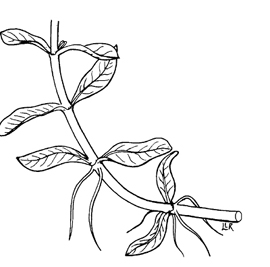 roots. Stem erect to ascending, branched. Leaves mostly basalbasal:
roots. Stem erect to ascending, branched. Leaves mostly basalbasal:
(adj) at or pertaining to the base, or point of attachment
, forming an ascending rosetterosette:
(n) a radiating cluster of leaves, usually close to the ground at the base of a plant
 ; sessilesessile:
; sessilesessile:
(adj) attached directly, without a stalk
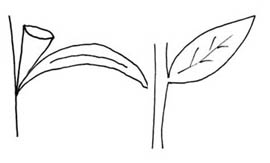 , or with a short or indistinct petiolepetiole:
, or with a short or indistinct petiolepetiole:
(n) the stalk of a leaf
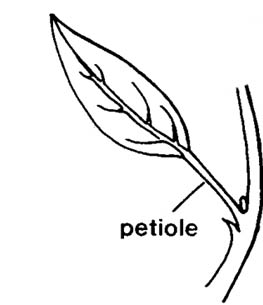 ; leaf bladeblade:
; leaf bladeblade:
(n) (syn. lamina) the flat, expanded part of a leaf, frond, or petal (excluding, e.g., the petiole)
 linear or oblanceolateoblanceolate:
linear or oblanceolateoblanceolate:
(adj) lance-shaped, with attachment at or near the narrow end. (compare lanceolate)
, upper leaves smaller and often with basalbasal:
(adj) at or pertaining to the base, or point of attachment
lobes or teeth; margins entireentire:
(adj) having a continuous margin that is not toothed or lobed
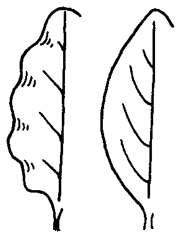 or serrateserrate:
or serrateserrate:
(adj) (of a leaf margin) bearing sharp teeth pointing forward or to the apex
 ; young leaves pubescentpubescent:
; young leaves pubescentpubescent:
(adj) (1) covered with short, soft hairs; (2) bearing hairs
with long, soft interwoven hairs. Leaves of flooded habitats basalbasal:
(adj) at or pertaining to the base, or point of attachment
; petioles elongated; blades ellipticelliptical:
(adj) in the form of an ellipse (oval)
 to lanceolatelanceolate:
to lanceolatelanceolate:
(adj) lance-shaped; widest point below the middle, tapering to the apex
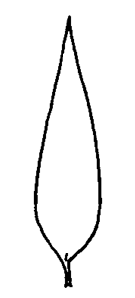 , often floating. Flowers solitary in axils, or inflorescenceinflorescence:
, often floating. Flowers solitary in axils, or inflorescenceinflorescence:
(n) the arrangement of flowers on the floral axis
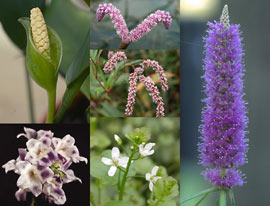 a racemeraceme:
a racemeraceme:
(n) an indeterminate, unbranched inflorescence having pedicelled flowers on a usually elongated axis (may be cymose)
 or paniclepanicle:
or paniclepanicle:
(n) an indeterminate, branched (often much-branched) inflorescence; the ultimate units may be of a different inflorescence type
 ; bracts linear; pedicelspedicel:
; bracts linear; pedicelspedicel:
(n) the stalk of a single flower in an inflorescence, or of a grass spikelet
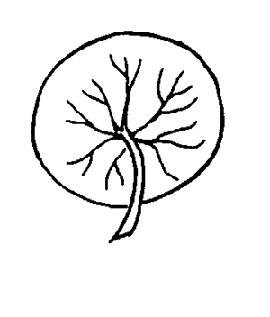 present; flowers glabrousglabrous:
present; flowers glabrousglabrous:
(adj) without hairs or scales
to densely covered with glandular and eglandular hairs. Calyxcalyx:
(n) the outer whorl of the perianth; all the sepals of a flower
 tube usually adnate to the ovaryovary:
tube usually adnate to the ovaryovary:
(n) a hollow organ at the base of the carpel of a flower in which ovules are produced
, sepals triangular, lanceolatelanceolate:
(adj) lance-shaped; widest point below the middle, tapering to the apex
 or ellipticelliptical:
or ellipticelliptical:
(adj) in the form of an ellipse (oval)
 ; corollacorolla:
; corollacorolla:
(n) the inner whorl(s) of the perianth; all the petals of a flower
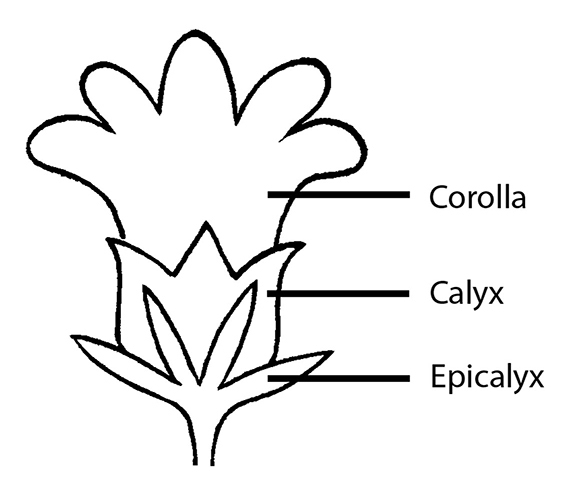 often with pouch or spurspur:
often with pouch or spurspur:
(n) a usually slender, hollow projection formed by the fused bases of the lower petals in some flowers notably of the genus Utricularia; a sac-like projection or extension of a petal or sepal; a short, fruit-bearing stalk
 , usually bilabiatebilabiate:
, usually bilabiatebilabiate:
(adj) two-lipped
; lobes 5, winged, 2 adaxialadaxial:
(adj) pertaining to the side facing toward the axis, as in the upper surface of a leaf
lobes longer than the 3 abaxialabaxial:
(adj) the side facing away from the axis, as in the underside of a leaf
lobes; adaxialadaxial:
(adj) pertaining to the side facing toward the axis, as in the upper surface of a leaf
lobes sometimes auriculateauriculate:
(adj) bearing auricles
; typically purplish or yellow.
seasonal freshwater wetland habitats; damp to wet sandy or heavy clay soils in and along swamps, floodplains, creek beds, and river banks
A genus of nearly 200 species; amphibiousamphibious:
(adj) of a plant able to live on land or in water
species in the genus are mostly confined to Australia. Three species have a life stage with floating aquatic leaves and are classified as ‘amphibious fluctuation-responders.’